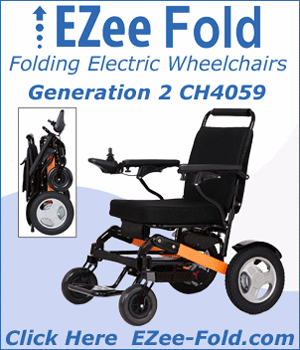Progression to a Power Wheelchair

Progression from a manual to a power wheelchair can be viewed by many wheelchair users as a negative event in their lives and an indication of a deterioration in their medical condition and abilities. While this is true in most cases, timely progression to a power chair can actually slow the user’s deterioration in their condition and abilities and improve their long term prognosis.
People are designed to use walking as the prime method of mobility. People who are unable to walk as a result of an accident or medical condition have to find alternate ways of being mobile. The most viable alternative for most people to go to when the hips, legs and feet no longer function as designed are the shoulders, arms and hands.
Many people who are unable to walk, are able to use manual wheelchairs in the early stages of their medical condition and while the human body is able to adapt to using wheelchairs in most cases, our bodies were not designed to be used in this manner. People who require wheelchairs for getting around use their arms for much more than mobility. Often these people will also use their arms for transfers to toilets, beds, the floor and into cars putting extra stress on the arms and shoulders.
Manual wheelchair users often see their delaying the progression to a power chair as a source of pride and will put off making the move to power for as long as humanly possible. This attitude seems to be a bit more prevalent among users who have been in their chairs since an early age or are involved in sports. The issue I have with this attitude is they often have ruined their shoulders or arms before admitting the need for a power chair.
Unfortunately, once this stage is reached mobility is not the only activity which has been affected. The wheelchair user is now likely going to have pain and difficulty during transfers, dressing, bathing and other normal daily activities, assuming they can do them at all.
By making the move to a power wheelchair before any permanent damage has been done, or in the case of user with a deteriorating condition, before they’ve deteriorated to the point they can’t propel a manual wheelchair or do basic daily activities, the loss of the independence and abilities of the user can often be delayed.
Having a power wheelchair available for use, while the user is still able to use a manual chair, allows the wheelchair user to have the best of both worlds. On days when they are not up to par, or have a particularly gruelling schedule, they can use the power chair, and on days when they have an easier day or are feeling particularly well, they can use the manual chair.
While it may seem like a luxury to have two types of wheelchairs available at the same time, the reduction of wear and tear on the arms and shoulders may actually present a financial savings by delaying or even eliminating the costs of caregivers and at the same time prevent possibly years of pain while maintaining the user’s independence and dignity.


 Online Vendors
Online Vendors  US Online Vendors
US Online Vendors 
